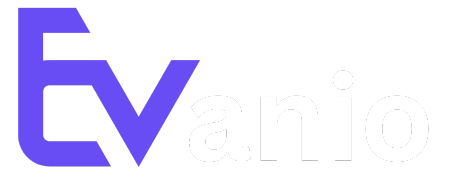In today’s fast-paced digital landscape, businesses of all sizes need a reliable and efficient way to manage their online presence. This is where a Content Management System (CMS) comes in—a powerful tool that allows individuals and organizations to create, manage, and modify digital content without requiring specialized technical skills. Whether you’re running a personal blog, a corporate website, or an e-commerce platform, a CMS is essential for streamlining content creation, management, and publication.
This comprehensive guide will delve into everything you need to know about CMS platforms, their features, types, benefits, and how to choose the right one for your business.
What is a Content Management System (CMS)?
A Content Management System is software that enables users to create, edit, organize, and publish content on websites without the need for extensive coding knowledge. Essentially, it separates the content from the design and functionality of the site, allowing non-technical users to manage content more easily.
At its core, a CMS consists of two primary components:
- Content Management Application (CMA): This is the user-friendly interface that allows content creators, editors, and managers to create, edit, and manage content without needing to interact with the website’s code.
- Content Delivery Application (CDA): This component handles the backend processes that take the content input from the CMA and update it on the website, ensuring that the content is displayed properly.
Key Features of a CMS
A good CMS offers a wide range of features that simplify website management and provide flexibility to users. Some common features include:
- Content Creation and Editing: The most important function of a CMS is the ability to create and modify content without coding. With an intuitive text editor (similar to Microsoft Word or Google Docs), users can create pages, blogs, and other types of content with ease.
- Templates and Themes: A CMS typically comes with a variety of pre-built templates and themes. This allows users to select or customize a design that best suits their needs, giving websites a professional look without needing to build the design from scratch.
- Media Management: CMS platforms support multimedia content, allowing users to upload, organize, and manage images, videos, and audio files.
- Content Organization: The ability to categorize and tag content helps users keep their website organized. This feature improves navigation and helps with SEO (Search Engine Optimization) by creating a logical structure.
- User Roles and Permissions: CMS platforms allow administrators to define roles for different users, such as editors, authors, and administrators. This ensures that only authorized users can make changes to the website.
- Version Control: CMS platforms often include revision history, allowing users to view previous versions of their content and restore older versions if necessary.
- SEO Tools: Built-in or integrated SEO tools help optimize the content for search engines, ensuring higher visibility and improved search rankings.
- Mobile Responsiveness: Modern CMS platforms offer mobile-friendly design options, ensuring that your content looks great on any device, whether it’s a smartphone, tablet, or desktop computer.
- Plugins and Extensions: CMS platforms offer a variety of plugins or extensions that add functionality, such as e-commerce tools, social media integration, and analytics tracking.
- Multilingual Support: For global businesses, many CMS platforms provide tools to manage multilingual content, making it easier to reach international audiences.
Types of CMS Platforms
There are several types of CMS platforms available, each catering to different needs and levels of expertise. Here are the main categories:
- Open-Source CMS:
Open-source CMS platforms are free to use, modify, and distribute. They are highly flexible, allowing developers to customize them to fit specific needs. Popular open-source CMS platforms include:- WordPress: The most popular CMS globally, WordPress powers over 40% of websites on the internet. It is user-friendly and has a vast library of plugins and themes.
- Joomla: Known for its flexibility and powerful features, Joomla is a great choice for complex websites and applications.
- Drupal: Ideal for developers, Drupal offers extensive customization options and is highly secure, making it suitable for large, complex sites.
- Proprietary CMS:
Proprietary CMS platforms are owned by a company, and users typically pay a licensing fee to use them. They often come with premium support and advanced features. Examples include:- Sitecore: A high-end CMS designed for enterprises, offering advanced personalization, analytics, and marketing automation features.
- Kentico: A fully integrated CMS that supports content management, digital marketing, and e-commerce.
- Cloud-Based CMS:
These platforms are hosted in the cloud and typically offer a subscription-based model. They are easy to set up and require minimal technical maintenance. Examples include:- Wix: A beginner-friendly CMS that offers drag-and-drop design features and a variety of templates.
- Squarespace: A popular choice for small businesses and creatives, Squarespace offers beautiful templates and built-in e-commerce functionality.
- Headless CMS:
A headless CMS separates the content management backend from the presentation layer (frontend). This allows developers to deliver content across multiple platforms, such as websites, mobile apps, and IoT devices. Examples include:- Contentful: A popular headless CMS used for delivering content to various platforms through an API.
- Strapi: An open-source headless CMS that allows developers to customize and manage content through APIs.
Benefits of Using a CMS
Implementing a CMS offers numerous benefits, making it a crucial tool for businesses of all sizes. Here are some of the key advantages:
- Ease of Use:
A CMS allows non-technical users to manage content without needing to know HTML, CSS, or other programming languages. This reduces the need to rely on developers for simple content updates. - Efficiency:
With a CMS, content can be created, updated, and published quickly and easily. This streamlines workflows, especially for websites that require frequent updates, such as blogs or e-commerce platforms. - Cost-Effective:
While some CMS platforms are free or low-cost, even proprietary CMS platforms often prove to be more cost-effective than hiring a dedicated web development team for every update. - Customization:
Most CMS platforms are highly customizable, allowing businesses to tailor the site’s functionality and design to meet their specific needs. Plugins, themes, and extensions can easily be added to enhance the user experience. - SEO-Friendly:
CMS platforms come with built-in SEO features or plugins that make it easy to optimize your content for search engines. These tools can help improve your website’s visibility and ranking on search engine results pages (SERPs). - Scalability:
As your business grows, a CMS can scale with it. Whether you need to add more content, features, or users, a CMS can handle the increased load without requiring a complete website overhaul. - Security:
Many CMS platforms offer robust security features, including regular updates, SSL support, and advanced user permissions. Plugins and extensions can further enhance security measures to protect against cyber threats. - Collaboration:
CMS platforms often support multiple users, making it easier for teams to collaborate on content creation and editing. Role-based permissions ensure that the right people have access to the appropriate tools.
How to Choose the Right CMS for Your Business
Selecting the right CMS for your business can be overwhelming, given the number of options available. Here are some factors to consider when choosing a CMS:
- Ease of Use:
If you’re not a developer, choose a CMS with an intuitive user interface and easy-to-use tools. Platforms like WordPress and Wix are ideal for beginners, while Drupal may require more technical expertise. - Customization Needs:
Determine how much customization your website requires. If you need advanced functionality, choose a CMS that offers extensive plugins, themes, and extensions. - Scalability:
Ensure that the CMS can grow with your business. If you anticipate adding more content, features, or users over time, choose a platform that can scale without performance issues. - Security:
Evaluate the security features of the CMS, especially if your website handles sensitive data, such as e-commerce transactions or customer information. Platforms like Drupal are known for their security, while others may require additional security plugins. - SEO Features:
If SEO is a priority, choose a CMS that includes built-in SEO tools or integrates with popular SEO plugins. - Budget:
Consider both the initial cost and ongoing costs associated with the CMS. Open-source CMS platforms are often free but may require hosting and maintenance fees. Proprietary and cloud-based CMS platforms may have monthly or annual subscription costs.
Conclusion
A Content Management System (CMS) is an indispensable tool for businesses and individuals looking to establish or manage an online presence. With a variety of platforms available—ranging from beginner-friendly options like WordPress to advanced, scalable systems like Drupal—there’s a CMS suited to every need. By choosing the right CMS, you can streamline content management, enhance user experiences, and drive business growth. Whether you’re running a blog, e-commerce store, or corporate website, a CMS will make your digital journey smoother, more efficient, and more impactful.
Understanding the features, types, and benefits of a CMS will enable you to make an informed decision that aligns with your business goals.








